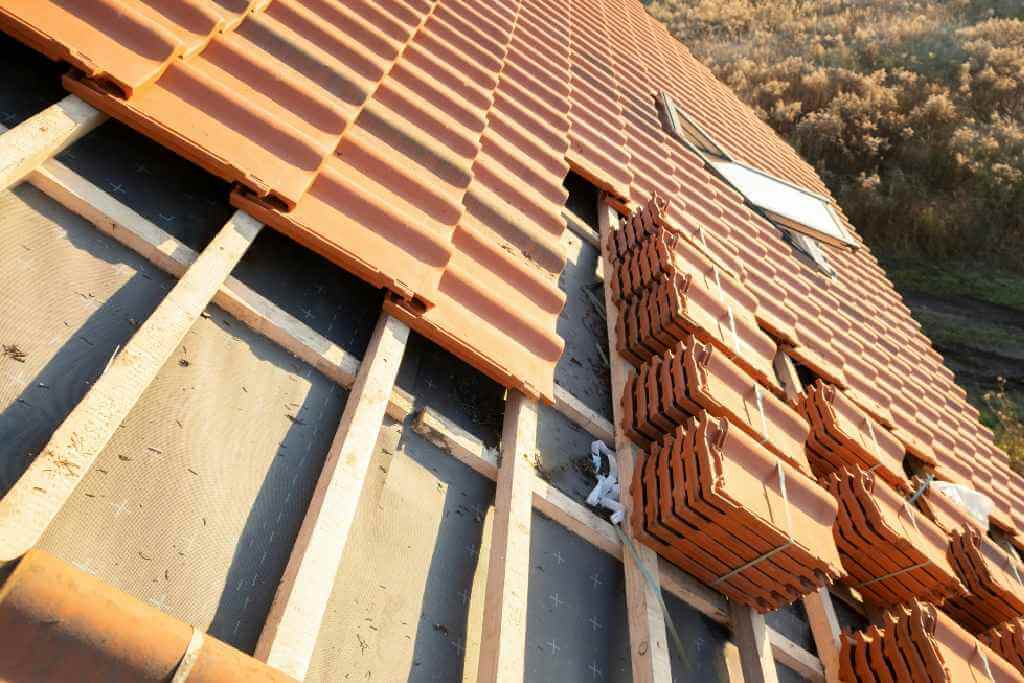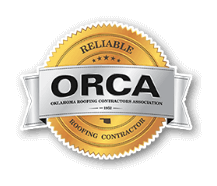Something we often see is homeowners waiting too long to replace a worn-out roof, only to get caught in the middle of inclement weather or stuck on a long contractor waitlist. In Oklahoma, choosing the best time to install a new roof can save you money, reduce stress, and prevent unnecessary damage. At Maupin Roofing, we help people plan their roof replacement projects so they don’t end up learning that lesson the hard way.
What Is the Best Season to Replace a Roof or Install a New One?
Oklahoma’s weather has a reputation for being unpredictable. Between hurricane season threats in late summer, spring hailstorms, and the risk of ice and snow during the winter months, knowing the best season to schedule your roof replacement can save you from a lot of delays and extra costs.
While roofing professionals can technically install roofs year-round, many roofing companies agree that some months are just better than others. Based on what we’ve seen from decades of experience, fall is usually the most optimal time for a roof installation in Oklahoma.
But every season has its ups and downs. You can expect the following for each:
Season | What Works in Your Favor | What to Watch Out For |
|---|---|---|
Spring (March–May) | Comfortable temperatures help roofing materials (especially asphalt shingles) seal properly. Great time to fix roof leak issues after winter. | The rainy season ramps up in early spring. Also a busy time for roofing contractors, so you’ll want to plan ahead to avoid delays. |
Summer (June–August) | Direct sunlight and long days help speed up installation. Early summer has stretches of predictable weather. | The summer season often brings extreme heat, which can be tough on crews and materials. Summer roof replacement costs may rise due to higher demand and increased labor costs. |
Fall (September–November) | Cooler temperatures, stable weather conditions, and ideal sealing for shingles make this the best season for most. Fewer interruptions and a great time to replace a roof before cold weather sets in. | Fall roof replacement schedules fill up fast. Late fall can sometimes bring early cold snaps, which may interfere with how materials are installed properly. |
Winter (December–February) | Lower demand, more flexibility in terms of contractor’s availability, and possible lower prices. Emergency roof repair or roof replacement may be necessary in the colder months. | Cold temperatures make roof installation tricky. Sealants like tar sealant may not work as well. Some roofing companies avoid full replacements in the winter unless conditions are mild. |
So if you’re looking for the best time to replace your roof, the fall and early spring seasons usually offer the most favorable balance of conditions and availability. But depending on your roof’s condition, waiting might not be an option.
Most Popular Season: Fall Roof Replacement or Installation
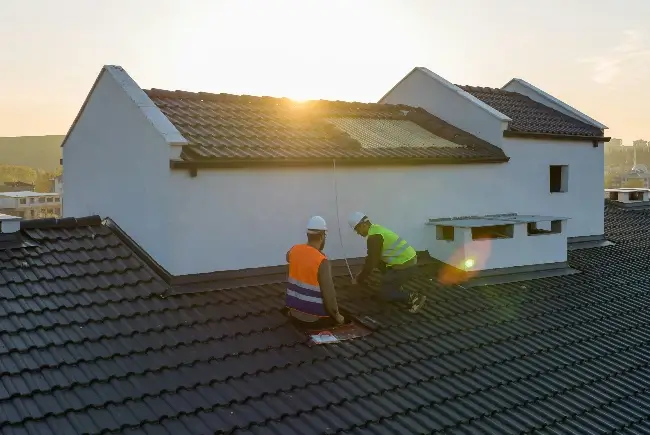
If you ask most roofing professionals in Oklahoma about the best time of year to replace, they’ll likely point to the fall—and for good reason. It offers the most predictable mix of conditions, without the extremes of summer or winter.
Why Fall Works So Well for Oklahoma Roofs
Cooler temperatures mean better working conditions for crews, and they help roofing materials like asphalt shingles settle and bond correctly. The weather isn’t too hot, too wet, or too cold. It’s that “just right” window for a quality roof installation.
Fall roof replacement also means your roof is ready to take on cold weather and winter storms. You’re heading into the colder months with a fresh system overhead. No need to worry about a roof leak when the snow or ice hits.
Because shingles rely on a heat-activated strip to seal, they perform best when installed during moderate temperatures. Too hot or too cold, and the adhesive doesn’t work as intended. Fall conditions allow everything to be installed properly.
Since it’s such a popular season, many roofing contractors offer special scheduling options or extended service hours. Still, fall is a busy season, so it’s always smart to plan ahead.
When Should You Not Schedule a Roof Replacement or Roof Installation?
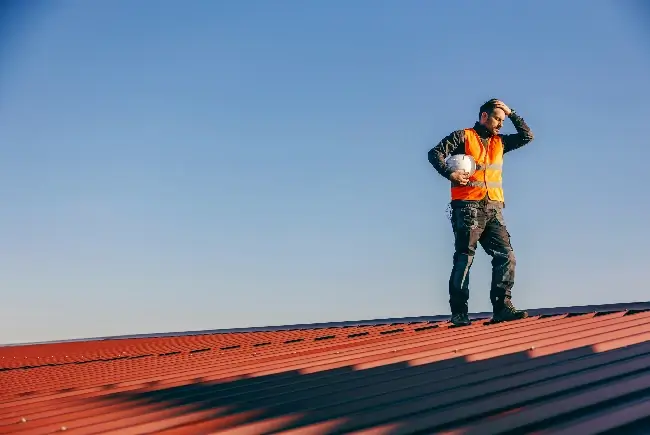
There are times when it’s smarter to wait, even if your roof is showing signs of age. Here are the conditions that tend to cause issues or drive up the cost of the replacement process:
Extreme Heat During the Summer Months
Oklahoma summer months bring extreme heat, which affects both people and materials. Shingles can soften too much under direct sunlight, making them harder to install evenly. Crews may have to take extra breaks to stay safe, and that slows down progress.
If you’re considering a summer roof replacement, aim for early morning starts or milder stretches. Avoiding mid-to-late July, when temperatures regularly climb above 100°F, can help keep the project on track.
Cold Weather and Winter Roofing
We don’t get heavy snow every year, but the cold temperatures in the winter months can still create challenges. Roofing materials like asphalt shingles and tar sealant need a certain warmth to activate properly. When it’s too cold, materials become brittle and difficult to handle. Plus, frost or ice on the roof deck creates safety hazards and may prevent proper sealing.
We can still do emergency roof repair or roof replacement in winter, but if you’re scheduling ahead, it’s usually better to avoid that season unless you’re dealing with active storm damage or a leak.
Peak Storm Season in Spring
Spring might sound like a good time to replace your roof, but keep in mind that Oklahoma’s rainy season hits in full force by April. Hail, high winds, and flooding can pop up without much warning, making it difficult to keep a job moving without interruptions.
For those looking to get their roof replaced in early spring, the key is flexibility. Try to book early, and expect the occasional weather delay. A little patience goes a long way during home improvement season.
High Demand or Limited Availability
Right after a big storm or during the busy season, many roofing companies book up weeks in advance. Material prices can also surge due to demand. In Oklahoma, this sometimes happens in late spring or right after a major hailstorm during hurricane season. If you can wait until late summer or early fall, you may have better access to skilled labor and materials at more reasonable prices.
Signs That It’s Time to Replace Your Roof
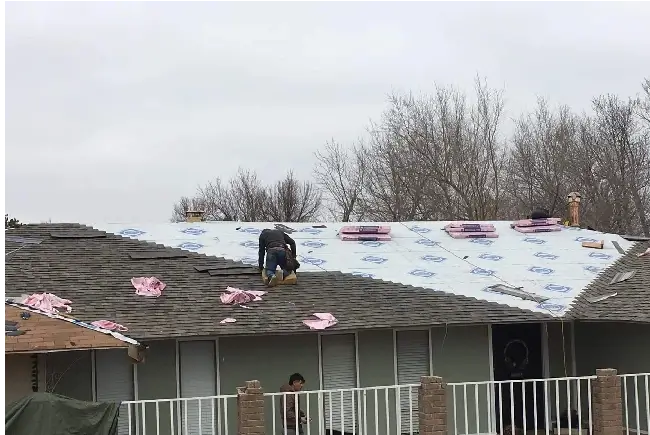
Sometimes it doesn’t matter what the season is—your roof may be at a certain point where waiting could cause bigger problems. If you notice any of the following signs, it may be time to get your roof replaced, no matter the calendar.
Your Roof’s Age Is Showing
If your roof is 15–25 years old and hasn’t been inspected recently, it might be nearing the end of its lifespan. Even the best shingles wear down with time, especially under Oklahoma’s extreme weather conditions. Sun, hail, snow, and wind all chip away at your roof’s integrity.
You’re Seeing Storm Damage
Storm damage doesn’t always look dramatic. It can be as simple as a few missing shingles or as serious as water seeping into your attic. If you’ve had multiple roof repair calls over the last year or two, that’s a sign the system as a whole may need to be replaced.
Shingles Are Curling or Falling Off
Beyond being a cosmetic problem, cracked, curling, or missing shingles are also a sign that your roofing materials have started to fail. If you’re seeing bald spots or excessive granule loss in your gutters, your roof deck may be exposed in certain areas.
Roof Leaks, Moisture, or Sagging
If water is getting inside, whether it’s a slow drip or visible stain, that’s a sign to look deeper. A roof leak can lead to warped drywall, rotted framing, or mold growth. Sagging in the roof deck could mean there’s deeper structural damage that calls for full replacement.
Your Energy Bills Are Climbing
Poor insulation, ventilation problems, or degraded shingles can all affect your home’s efficiency. If your cooling or heating bills are noticeably rising, your roof could be a hidden factor. A new roof with upgraded materials can help keep temperatures more consistent inside.
Extra Tips for Oklahoma City Homeowners and Business Owners
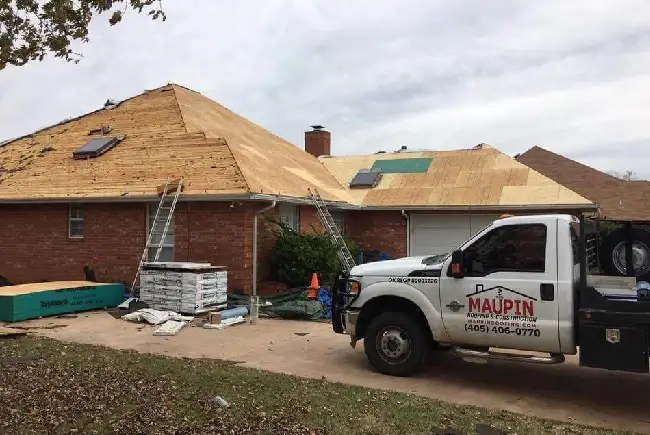
Planning a roof replacement isn’t just about finding the best time on the calendar. It’s also about making informed decisions based on your home’s age, location, and exposure to weather.
In Oklahoma, roofs take a beating. We deal with more storm damage, UV rays, and wind than many states. Choosing resilient roofing materials and scheduling your installation during ideal temperatures helps the system last longer.
Flat commercial roofs or multi-structure buildings may need a different approach. These roofs are more sensitive to cold, adhesive curing, and installation techniques.
Budget planning matters, too. Material costs and roofing service costs may fluctuate with higher demand or after widespread storms. If you’re trying to manage cash flow or insurance claims, we can help guide you on timing.
Knowing the Best Time to Replace Your Roof Can Save You Thousands
You don’t want to be caught mid-roofing job when a surprise storm hits, or scrambling for help after damage has already been done. Our team of experienced residential roofing contractors can help you choose the right season, avoid unnecessary delays, and get the most out of your investment.
So before you pick any other season and hope for the best, let’s talk. We’ll help you work around the rain and get your new roof installed without an issue.
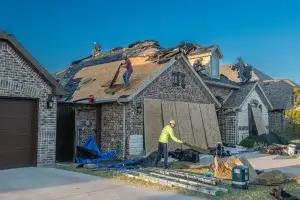
New Roof Installation Guide for Homeowners
As pros in the roofing industry, we know what really goes into a well-built roof and what can go wrong when corners are cut. A
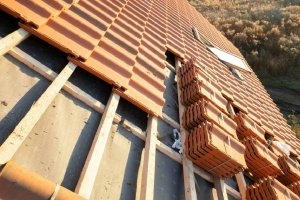
Best Time to Install a New Roof in Oklahoma
Something we often see is homeowners waiting too long to replace a worn-out roof, only to get caught in the middle of inclement weather or
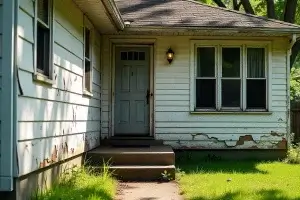
8 Hidden Costs of Neglecting Home Exterior Elements
Many homeowners wait until something breaks before calling for help, but that delay comes with a price. The costs of neglecting home exterior elements often

Flat Roof Systems for Commercial Properties: Types, Benefits & Costs
Many commercial buildings in OKC rely on flat roof systems for commercial properties because they’re versatile, sturdy, cost-effective, and easier to maintain. But how do

A Comprehensive Guide to Roofing Health Checks
Protecting roofing health means protecting the whole structure, the people living inside, and the air everyone breathes. For Oklahoma homeowners, regular roofing checks are especially

Green Roofs for Residential Homes: Sustainable Living
Eco-friendly living has made its way to rooftops, and the results are impressive. Green roofs for residential homes are helping families reduce energy costs while

